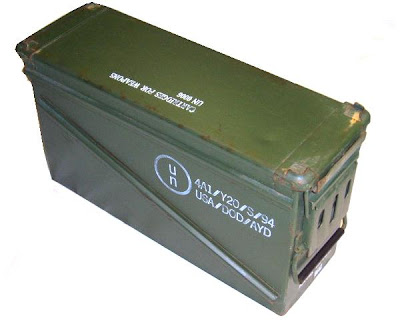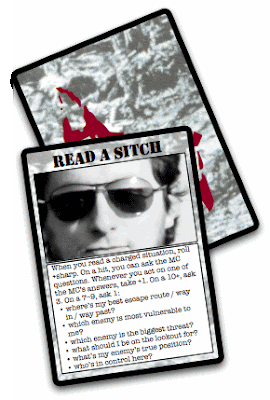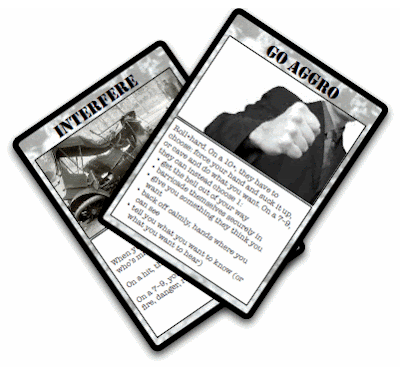OK, Dragon Age 2 (not to be confused with the Dragon Age RPG 2nd Box set, which is not available for pre-order from green Ronin and, which, from what I’ve read so far, is pretty awesome) . As promised, I finished a second playthrough, trying a different approach and, also as promised, I want to drill into the experience a little.
First, the non-spoiler version. My initial playthrough was as a rogue, my second as a mage. The overall experience of the second playthrough was very satisfying, and a number of things unfolded differently based on my choices and behaviors. However, a number of essential things, especially the big events which I’d hoped to change, did not change substantially. This was a disappointment, but it was offset by the other ways in which the game rewarded a different approach. If you are interested in doing a second playthrough, I endorse three things:
- If you played a non-mage, play a mage and vice versa. The delta from rogue to fighter is not as interesting as it is between mage and non-mage..
- Do not be afraid that you must make the “right” choice. The game rewards real decisions over caution.
- Don’t buy anything but backpacks, gifts and recipes (and re-check all the merchants at the start of each chapter)
Ok, on to spoilers. If you’ve finished the game once, then there may be mild spoilers about branches you didn’t take (though I’ll try to keep them to a minimum) but if you haven’t finished the game, then there will _definitely_ be some spoilers. So, if need be, look away.
.
.
.
.
.
.
.
.
The biggest motivation for me in the second playthrough is that the game did a FANTASTIC job of making me feel responsible for Anders’ actions. In my first playthrough, I helped him out, even though I knew it was suspicious, so when it went down, I felt like I had allowed it to happen, and that in doing so I had bollixed any chance of sorting this matter out peacefully.
Turns out, not so much. Even if you don’t help, he does it anyway. This was, honestly, pretty upsetting to me. Similarly, it turns out that your mother’s going to die no matter what. You can kill Dupuis if you want (I didn’t the first time and felt like I’d been suckered, but it turns out killing him the second time doesn’t help at all). Also, Trask’s conspiracy goes to hell, whether it’s Orsino or Meredith who sends you after them, so that’s pretty much hosed too.
These things should annoy me more than they do. These were the big things I was coming back to try to tackle another way, and it turns out they’re pretty much nailed to the rails. But to my (pleasant) surprise, they get balanced out, often in small things.
For example, I was surprised when a different sibling lived. If you play a mage, Carver lives and Bethany dies, while it’s the reverse for fighters and rogues. That alone added a surprising amount of depth to the replay, since it introduced an extra element of character interaction into a game that already excels at that. It also introduces branches in terms of _how_ you lose your sibling (because the fact that you will is on rails). If you take them into the dark roads, they’ll die, unless you bring Anders, who will make them a grey warden. If you don’t take them, they go to the circle and the templars respectively. Either way, you lose your sibling, but it introduces enough variety that I was intrigued.
Also, Carver is a jackass. Bethany is definitely the good twin.
One other unexpected bonus of a replay was that it changes your default party configuration. When I played a rogue, It was usually me, Aveline, Anders and Merril (since I liked the double dose of area attack). As a mage, I needed a rogue in the group, and brought my own firepower, so I went with Aveline, Fenris and either Varic or Isabella. Obviously, this changed from time to time, but with a different default, I ended up hearing different conversations than I had previously, since many of them require previous conversations. Specifically, I ended up liking Fenris _much_ more on this playthrough, and I got some Aveline/Isabella conversations which absolutely knocked my socks off which I’d not heard the first time through.
With all of this, it turns out that different choices were only a part of the difference in this playthrough. Honestly, for the first two chapters, the differences were interesting, but very few of them stick in my head. This annoyed me some because on the second playthrough I did one thing I really hated – I brought the Magister’s son back alive – in hopes of turning it into political support in chapter 3. No such luck, and as far as I could tell, nothing further came of it.
I did, I admit, play through the Feynriel dream sequence several times to see what motivated different characters to betray me in different ways (for the record, Isabella’s was the most awesome, though Merril and Aveline both were good). Pro-tip – if you’re playing a mage, don’t bring Fenris. He kind of killed the entire group in about 3 attacks. Not so good.
The final chapter is where the rubber meets the road, and you either back the mages or the templars. In my first playthrough, I tried to walk the middle road and act as a peacekeeper, and that is what Ander’s blew to hell. The second time I picked a side, the Templars, and it proved interesting. I got a reward for it (armor I couldn’t use) and some different missions than I had previously engaged in, and that was also interesting since they offered some insight into the Templars. I presume it’s something similar for the mages, but that’s the one path I haven’t tried yet.
One thing I will say about the second playthrough is that it expanded my perspective on events, which is perhaps why I’m not so upset about things unfolding as they did. If you support the Templars, you get an opportunity to see how badly Meredith is _trying_ to make things work and failing. Every new thing you find out about what’s going on just makes everything that much more tragic. That’s no small accomplishment.
The expanded perspective also makes the endgame make more sense. On the first playthrough it’s understandable that Meredith snaps and goes batty because of the artifact, but Orsino’s actions seem to come out of left field. Turns out there’s more to it, though even that is interestingly mixed. As a mage, I backed the Templars because I had decided that Orsino was “O” (the unnamed correspondent with your Mother’s killer). The question is answered by the end, and just to add that extra twist of the knife, Orsino may have been worse than he pretended to be, but he was better than thought he was. Ouch.
I mention, more or less as an afterthought, that I handled romance differently this time, choosing Isabella rather than Merril. This was interesting, but it felt like a surprisingly small matter compared to all my other interactions. Not sure if that’s good or bad. On one hand, I didn’t feel any real lack, but that might just be because the rest of the game was so good, not necessarily because the romance was all it needed to be.
I’m not in a huge rush for my third playthrough, but it tempts. Bioware is good enough with the depth of these things that I’m curious what I still have not yet discovered. God knows they seem to have embraced map re-use as license to branch things aggressively, and I’m very happy with that tradeoff. In a big plot way, I’m still curious what happens If you back the mages, but more, I’m curious what happens if you manage to push the other characters into deep rivalry (something I never accomplish – I’m all friendship all the time. It’s a flaw). But at the same time, I worry that the answers may be terrible.
It’s unreasonable, but I _like_ these characters too much to abuse them so. Just to see what would happen at one point, I handed Isabella over to the Arishok rather than fight him. He takes her and leaves and even though it was just a test that I quickly erased, I felt _terrible_ for doing it.
On one hand, that’s kind of lame, but on the other…man, it’s kind of amazing too. So long as Bioware can keep me that invested, they’ll keep getting my money.


